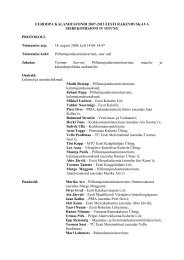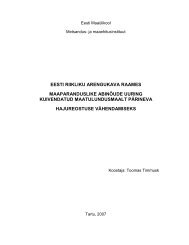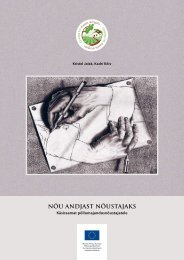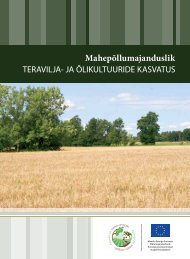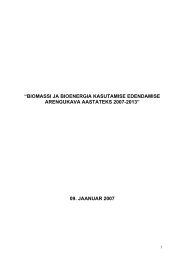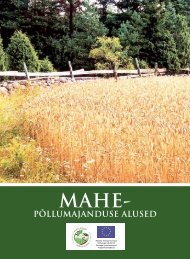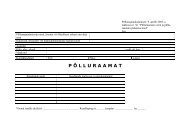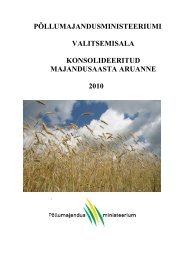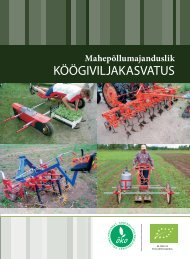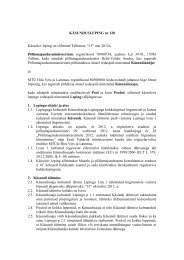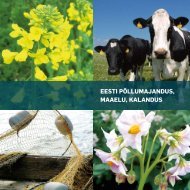estonian agriculture, rural economy and food industry
estonian agriculture, rural economy and food industry
estonian agriculture, rural economy and food industry
You also want an ePaper? Increase the reach of your titles
YUMPU automatically turns print PDFs into web optimized ePapers that Google loves.
1.<br />
Climate<br />
• Estonia’s climate is influenced by its close<br />
proximity to the Baltic Sea <strong>and</strong> the intensive<br />
cyclonical processes of the Atlantic Ocean.<br />
Moderately cold winters, cool springs,<br />
moderately warm <strong>and</strong> variably dry-to-rainy<br />
summers <strong>and</strong> long autumns are typical.<br />
• The annual average temperature is +5 °C.<br />
July is the warmest month with an average<br />
temperature of +16 °C to +17.5 °C, while<br />
February is the coldest with an average temperature<br />
of –3.5 °C in the western parts of<br />
Estonia <strong>and</strong> its isl<strong>and</strong>s <strong>and</strong> –7.5 °C in the<br />
eastern part of Estonia.<br />
• There are 1600–1870 sunny hours a year;<br />
the annual radiation balance for the territory<br />
encompassing Estonia is 3500 MJ/m.<br />
• The vegetation period (daily average temperature<br />
above +5 °C) lasts from the<br />
beginning of May until the end of<br />
September, the duration of which is approximately<br />
175 days.<br />
• The annual average rainfall is 550–720 mm.<br />
Rainfall exceeds humidity loss due to<br />
evaporation.<br />
• The average relative humidity in Estonia is<br />
80%.<br />
Mineral resources<br />
• The most important mineral resources of<br />
Estonia are oil shale, phosphorite, <strong>and</strong> peat.<br />
• Estonian oil shale is regarded as being of the<br />
world’s finest quality. Estonia’s oil shale<br />
resource coverage areas are in the northeast<br />
of the country, totaling approximately<br />
6,000 km 2 . The largest single Estonian deposit<br />
contains nearly 8 billion tonnes of oil<br />
shale. Oil shale is primarily used as a fuel for<br />
power stations (80%) <strong>and</strong> as raw material<br />
for the oil shale chemical <strong>industry</strong> (20%).<br />
• Phosphorite resources, which are located in<br />
Under<br />
water<br />
6%<br />
L<strong>and</strong> use 01.01.2001<br />
Other l<strong>and</strong> 17%<br />
Forest l<strong>and</strong> 45%<br />
Arable<br />
l<strong>and</strong> 25%<br />
Natural<br />
grassl<strong>and</strong> 7%<br />
5



